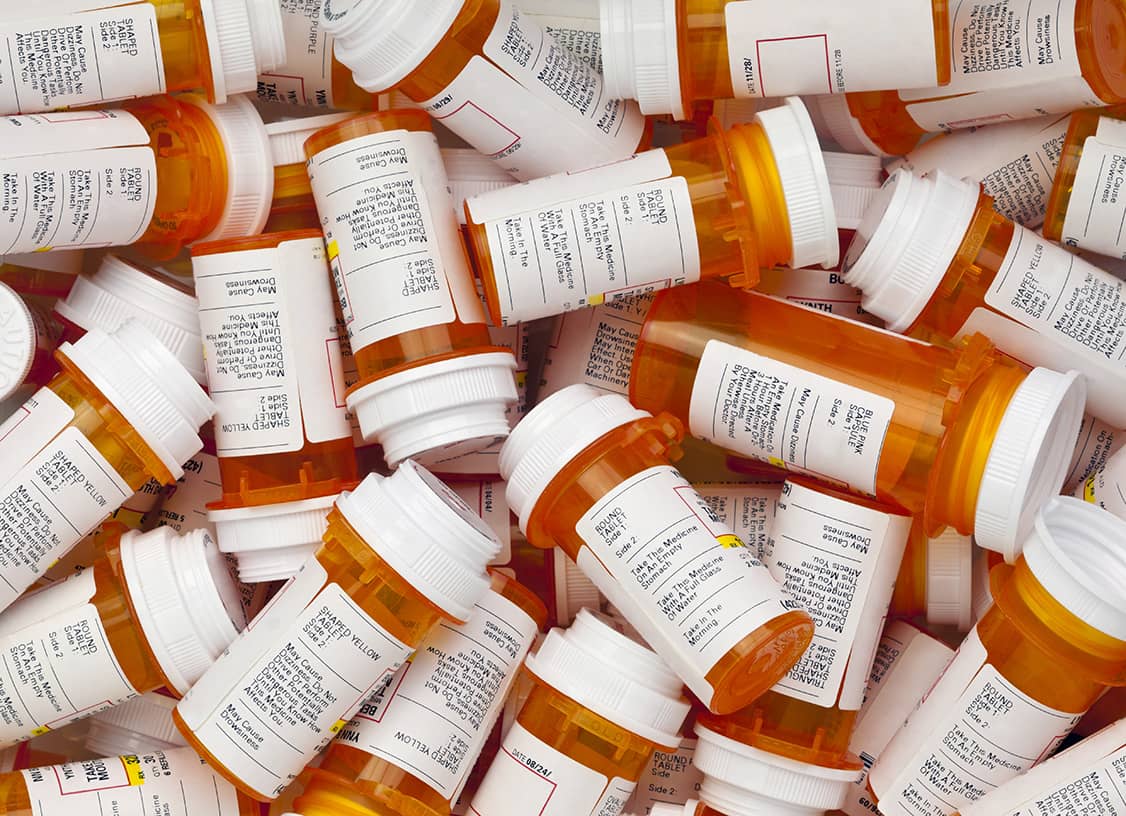Medicare Prescription Drug Plans
89% of adults aged 65 or older reportedly used prescription drugs in the past 30 days.1
If you’re a part of that majority, you know what it’s like when prescription costs start adding up at an alarming rate.
Even if you think you don’t need prescription drugs now, you can experience high out-of-pocket costs if your doctor prescribes you some – and since creditable prescription drug coverage is required by Medicare, you will also incur a permanent fee if you enroll late.
The good news is that Medicare gives beneficiaries two options that are easy to enroll in, and both can help make prescription drug coverage affordable.

How To Get Affordable Prescription Drug Coverage With Medicare
Part D offers peace of mind by providing a safety net should unexpected prescription needs arise. With prescription drug prices soaring, the cost for specialty medications can be astronomical – and without coverage, you could end up facing some hefty out-of-pocket costs!
Medicare Part D is easy to enroll in, and there are a lot of flexible plan options available to maximize your budget.
Option 1: PDPs
(aka Medicare Part D Prescription Drug Plans)
A PDP, also known as Medicare Part D, is a stand-alone prescription drug plan that is available to all Medicare-eligible individuals. Once you have enrolled in Medicare Parts A and B, you can add a PDP. These plans are offered by private insurance companies, so there are a variety of plans available that vary in cost and coverage.
To determine which one is right for you, shop around. We recommend contacting a licensed agent to talk through available plans according to your specific prescriptions and budget.
Option 2: MAPD plans
(aka Medicare Advantage Prescription Drug plans, or Medicare Part C)
MAPD plans conveniently combine all the benefits of Original Medicare with prescription drug coverage under one single plan. Medicare Advantage plans cover Medicare Parts A and B.
These plans are also offered by private, medicare-approved insurance companies. To be eligible for a MAPD, you must be enrolled in Original Medicare, and live in the plan area.
When to Sign Up For Medicare Part D
Unfortunately, you can’t sign up for Medicare Part D any time. There are only three enrollment periods when you can sign up for Medicare Part D:
- Initial Enrollment Period – IEP is when you can initially sign up for Medicare. You first become eligible 3 months before your 65th birthday, your birth month, and 3 months after your 65th birthday, for a total of 7 months.
- Annual Enrollment Period – AEP runs every year from October 15th – December 7th. This is when you can sign up for Part D for the first time, and/or make changes to your current plan. Coverage for plans chosen during this time will begin on January 1st.
- Special Enrollment Period – SEP allows enrollment for Medicare Part D under specific individual circumstances (like loss of employer coverage).
Is Medicare Part D Mandatory?
Technically, Medicare Part D is not mandatory. However, it’s important to note that if you choose to not sign up for Part D during any of the above enrollment periods that apply to you, and are forced to sign up later, you will then incur a permanent late enrollment fee.
This permanent fee is added to your prescription drug plan’s monthly premium, and it will remain in place the entire time you are enrolled in Part D coverage. The fee amount is calculated based on the number of months you went without creditable prescription coverage.
To avoid the hassle of a Part D enrollment penalty, it’s recommended to enroll in a plan when you first become eligible.
If you plan to work past the age of 65, you might be able to delay Medicare Part D enrollment without a penalty by getting a written “notification of creditable coverage” from your current plan. If this coverage ends, you have 63 days to enroll in a Part D plan. You would need to make sure you can qualify for the Special Enrollment period before starting this process.

Medicare Part D FAQs
Have a question about Medicare Part D? Check out the FAQs below.
What is covered under Medicare Part D?
Prescription drugs covered by Medicare Part D must:
- Be medically necessary
- Be prescribed by a licensed physician in the proper dosage limits
- Have FDA approval and be sold in the United States
How do I know if my medication is covered or not?
You can ask your doctor about plans that can cover your existing prescriptions.
If you’d like to learn more about plan options, you can also contact one of our independent agents, who can guide you through plan options that may meet your needs and budget.
What is creditable coverage for Medicare Part D?
Creditable coverage means coverage that is at least as good as (or better than) Medicare coverage.
Examples of Medicare Part D creditable coverage include a Group or Union Plan, VA (Department of Veterans Affairs) coverage, and FEHBP (Federal Employee Health Benefits Program).
How does Part D work with other insurance?
Before turning 65, reach out to your benefits administrator to discuss your options and weigh the benefits.
Medicare Part D might be able to work with your existing third-party coverage to offer additional benefits. However, there are some cases when opting for additional coverage can disqualify you from employer or union health coverage. You may then want to consider dropping existing coverage in favor of a Medicare plan.
Can I get additional help with Medicare Prescription drug costs?
Medicare Extra Help, or LIS (Low Income Subsidy), is a low income subsidy to help seniors with prescription drug costs. This program provides assistance with premiums, deductibles, and prescription drug copays.
To qualify, one must be receiving Medicare, have limited resources and income and live in the U.S.
To determine your eligibility, complete the SSA Extra Help application or consult with your Independent Insurance Agent.